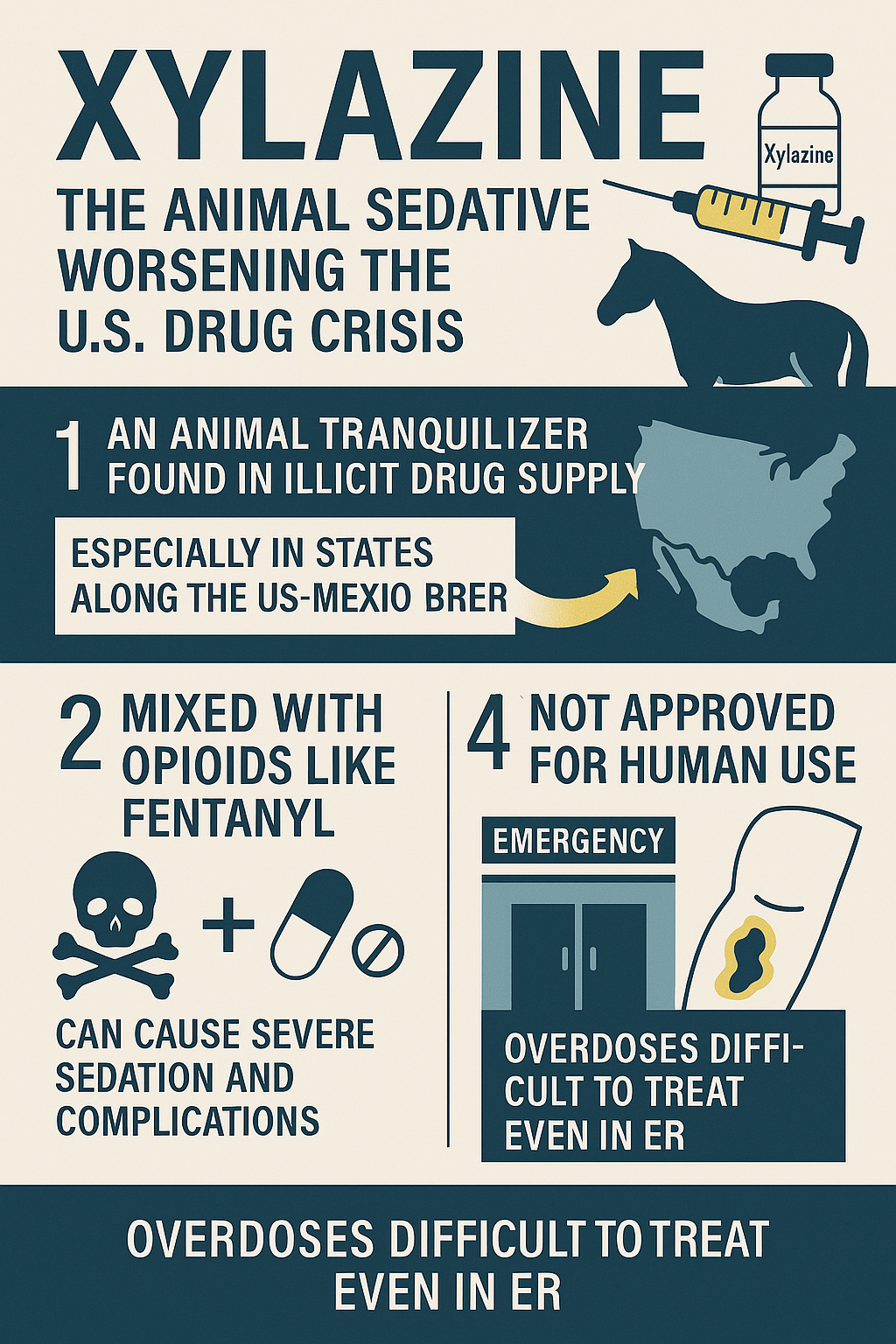
⚠️DANGEROUS Animal Sedative Found in Illicit Drugs in the U.S.
A dangerous veterinary sedative called xylazine has been found in the drug supply along the U.S.-Mexico border.
Xylazine: The Animal Sedative Worsening the U.S. Drug Crisis

What started as a veterinary compound used to sedate horses and livestock has now become a silent threat to public health in the United States. Xylazine, a potent sedative not approved for human consumption, has been detected in the illegal drug supply, particularly in states along the U.S.-Mexico border, raising alarms among authorities, experts, and communities.
The Drug Enforcement Administration (DEA) and the Centers for Disease Control and Prevention (CDC) have confirmed that this substance — known on the street as "tranq" — is being mixed with opioids, especially fentanyl, intensifying their depressant effects and significantly increasing the likelihood of fatal overdoses. Unlike other sedatives, xylazine does not respond to standard antidotes such as naloxone, making overdose reversal much more complicated.
While xylazine is commonly used in veterinary medicine to tranquilize large animals, its impact on humans is devastating. It causes deep sedation, respiratory depression, hypotension, and in severe cases, can lead to tissue necrosis, giving rise to what are now called "tranq wounds" — open, difficult-to-heal sores. When mixed with opioids, the risk goes beyond overdose; it creates complex clinical situations that are hard to manage even in emergency rooms.
In border cities like El Paso, San Diego, and Tucson, dozens of cases have been documented in recent months. However, the situation seems to be spreading beyond the border, also affecting major cities like Philadelphia, where authorities are already classifying xylazine as a common ingredient in heroin and fentanyl mixtures.
What worries experts most is the invisibility of the problem. Since it is a drug not approved for human use, it often goes undetected in standard toxicological tests. Its low cost and easy availability in the illegal veterinary market make it an attractive additive for traffickers who seek to enhance drug effects without considering the deadly consequences for users.
The outlook is critical. While authorities work to update protocols, launch prevention campaigns, and restrict access to xylazine, affected communities face a new dimension of the opioid crisis — one where fighting overdoses is increasingly difficult and deadly.











LEAVE A COMMENT: